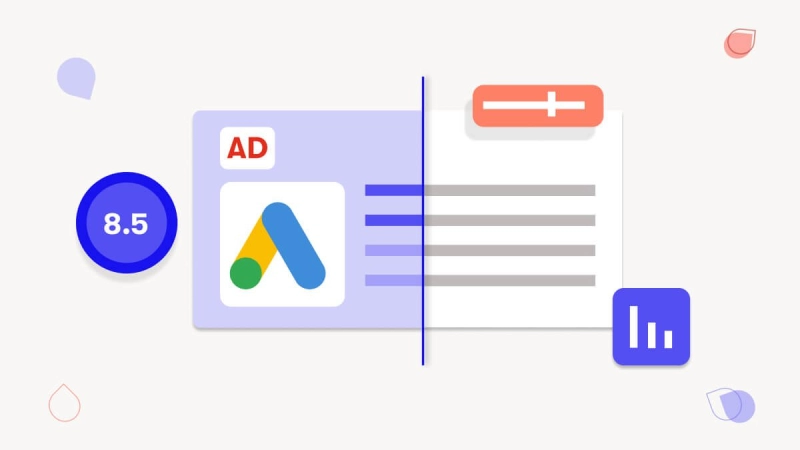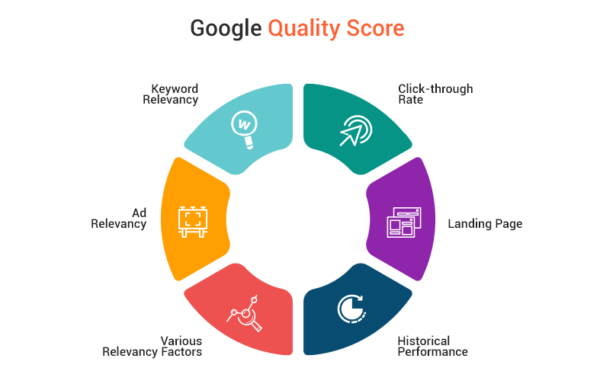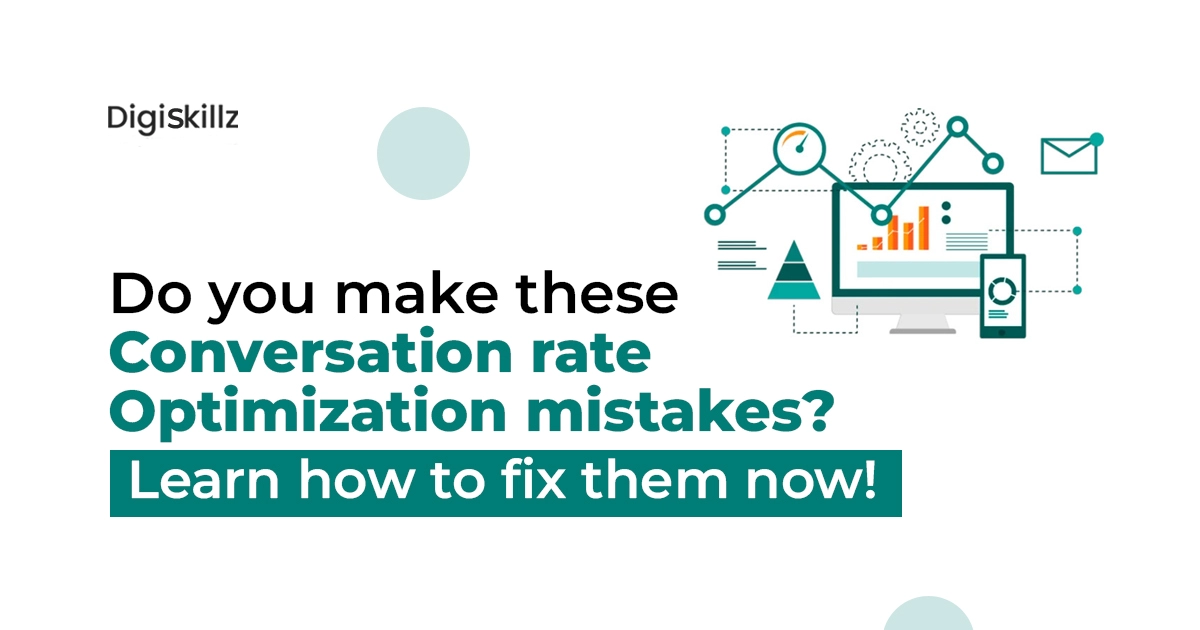Table of Contents
Introduction
Google Ads is a powerful tool for businesses to get in front of their target audience and drive conversions. But to be truly successful, your ads need to have a high-quality score. A higher quality score means lower costs, higher ad rankings, and improved ad performance. In this comprehensive guide, we’ll show you how to raise your Google Ads quality score in record time with actionable tips and best practices.
Understanding the Importance of Quality Score

The Importance of Quality Score in online advertising cannot be overstated. Quality Score is a metric used by platforms like Google Ads to evaluate the relevance and quality of ads, keywords, and landing pages. It directly affects your ad’s visibility, cost-per-click, and overall campaign performance.
Quality Score significantly impacts ad position and visibility. Platforms like Google Ads use Quality Score as one of the factors to determine the position of your ad in search engine results. A higher Quality Score increases the chances of your ad appearing in top positions, leading to increased visibility and exposure to potential customers. Being in prominent positions improves the likelihood of attracting clicks and generating higher click-through rates.
What is Quality Score?
Quality Score is a metric used in online advertising, particularly in platforms like Google Ads, to assess the relevance and quality of ads, keywords, and landing pages. It is a rating given to each keyword in your campaign, ranging from 1 to 10 (with 10 being the highest score). Quality Score is primarily based on three factors: expected click-through rate (CTR), ad relevance, and landing page experience.
Why Does Quality Score Matter?
Quality score is crucial in determining ad performance on Google. A higher quality score results in a lower cost per click, higher ad rankings, and increased ad visibility. This translates tool for businesses to get in front of their target audience and drive conversions. But to be truly successful, your ads need to have a high-quality score. A higher quality score means lower costs, higher ad rankings, and improved ad performance. In this comprehensive guide, we’ll show you how to raise your Google Ads quality score in record time with actionable tips and best practices.
Improving Your Quality Score

Improving your Quality Score is a crucial aspect of running successful online advertising campaigns, particularly on platforms like Google Ads. Quality Score is a metric used by search engines to evaluate the relevance and quality of your ads, keywords, and landing pages. It directly impacts your ad positions, ad rankings, and the cost you pay per click.
Researching Keywords
Researching keywords is the process of identifying and selecting the most relevant and effective keywords to use in your online content, including website pages, blog posts, and online advertising campaigns. Keyword research plays a crucial role in optimizing your content for search engines and driving targeted traffic to your website.
Choosing the Right Match Type
Choosing the right match type is an important decision when setting up keywords for your online advertising campaigns, particularly in platforms like Google Ads. Match types determine how closely a user’s search query must match your chosen keyword in order for your ad to be triggered.
Crafting Compelling Ad Copy
Crafting compelling ad copy is essential for capturing the attention of your target audience, conveying your message effectively, and driving engagement and conversions.
Creating Effective Landing Pages
Creating effective landing pages is crucial for maximizing conversions and ensuring a seamless user experience for your online advertising campaigns. Landing pages play a crucial role in ad performance. An effective landing page should be relevant, user-friendly, and have a clear call to action.
Optimising for Mobile
Optimizing for mobile is crucial in today’s digital landscape, as mobile devices have become the primary means of accessing the internet for many users. to make sure mobile users have a smooth and user-friendly experience. Given the increasing number of people accessing the web through mobile devices, it’s crucial to optimise your ads for mobile.
Testing, Measuring, and Refining
Testing, measuring, and refining are essential practices for optimizing your Google Ads campaigns and improving your Quality Score over time. By continuously monitoring and analyzing your campaign performance, you can gather valuable insights and make data-driven decisions to refine and enhance your advertising strategy. Here’s how testing, measuring, and refining can contribute to improving your Quality Score.
Monitoring and Maintaining Your Quality Score

While implementing the above strategies can go a long way in raising your quality score, it’s essential to monitor and maintain it regularly. Monitoring and maintaining your Quality Score is crucial to ensure ongoing success and efficiency in your Google Ads campaigns. Here’s why monitoring and maintaining your Quality Score is important and how you can effectively manage it.
Using Analytics to Monitor Performance
Using analytics to monitor performance is a critical aspect of managing and optimizing your Google Ads campaigns. Analytics provide valuable insights and data that help you understand how your ads are performing, identify areas for improvement, and make data-driven decisions.
Adjusting Bids
Adjusting bids is an important aspect of managing your Google Ads campaigns. Bids determine how much you are willing to pay for each click on your ads and directly impact your ad positioning and visibility.
Continuing to Refine and Optimise
Continuing to refine and optimize your Google Ads campaigns is an ongoing process that ensures your advertising efforts remain effective and efficient. This involves regularly testing and measuring your ads, using the right keywords, and crafting compelling ad copy.
How long does it take to improve the quality score?
The time it takes to improve your Quality Score in Google Ads can vary depending on several factors, including the current state of your campaigns, the optimization efforts you undertake, and the competitiveness of your industry. Improving Quality Scores is not an instant process, but rather a gradual and ongoing effort.

How does quality score affect ad performance?
Quality Score directly impacts ad performance in Google Ads. It plays a crucial role in determining the ad position, cost per click (CPC), and ad rank.
What differentiates ad rank and quality score?
One of the criteria used to determine ad rank is quality score. Ad rank is the position in which your ad appears on the search engine results page.
Ad Rank
Ad Rank determines the position of your ad on the search engine results page (SERP). It is determined based on a number of variables, such as the amount you bid, your Quality Score, and the anticipated effects of ad extensions and other ad formats. The formula for Ad Rank is:
Ad Rank = Bid Amount × Quality Score × Expected Impact of Ad Extensions and Other Formats
Quality Score
Quality Score is a metric that evaluates the quality and relevance of your keywords, ads, and landing pages. It is measured on a scale of 1 to 10, with 10 being the highest score. Quality Score is calculated based on multiple factors, including:
- Expected click-through rate (CTR) of the keyword and ad.
- Ad relevance to the keyword and user search query.
- Landing page experience, including relevance and user-friendliness.
Should I only focus on quality scores when running Google Ads?
While Quality Score is an important metric in Google Ads, it’s not the only factor to consider when running your campaigns. While it’s essential to prioritize and optimize your Quality Scores, it’s equally important to balance your focus with other key aspects of your advertising strategy.

Advanced Quality Score Strategies
Advanced Quality Score strategies go beyond the basic tactics to further optimize and improve your Google Ads campaigns. These strategies require a deeper understanding of the factors that influence Quality Score and involve more advanced techniques to maximize your ad performance.
Ad Extensions
Ad extensions are additional pieces of information or interactive elements that can be added to your Google Ads. They provide extra details about your business, products, or services, making your ads more informative and engaging. Ad extensions can help improve your ad performance by increasing visibility, click-through rates, and conversions.
Remarketing Campaigns
Remarketing campaigns, also known as retargeting campaigns, are online advertising campaigns that target individuals who have previously visited your website or interacted with your brand but have not completed a desired activity, like buying something or completing a form. Remarketing campaigns allow you to re-engage with these potential customers, reminding them of your brand and encouraging them to take the desired action.
Custom Audience Targeting
Custom audience targeting is a strategy in digital advertising that allows you to define and target a specific audience segment based on specific criteria. Instead of relying solely on broad demographic or interest-based targeting, custom audience targeting enables you to reach a more refined and targeted group of individuals.
Implementing Negative Keywords
Implementing negative keywords is a critical aspect of optimizing your Google Ads campaigns. Negative keywords are specific words or phrases that you add to your campaign to prevent your ads from appearing for irrelevant searches. When someone includes a negative keyword in their search query, your ad won’t be triggered, saving you from paying for clicks that are unlikely to convert.

Monitoring and Maintaining Your Quality Score
Monitoring and maintaining your Quality Score is an essential part of running successful Google Ads campaigns. It allows you to continually assess the performance and relevance of your keywords, ads, and landing pages, ensuring that your ads are displayed prominently and at a lower cost.
Using Analytics to Monitor Performance
Using analytics to monitor performance is a crucial practice in digital marketing. Analytics provide valuable insights into how your campaigns, website, and marketing efforts are performing, helping you make data-driven decisions and optimize your strategies.
Adjusting Bids
One way to maintain your quality score is by adjusting bids accordingly. This ensures that your ads remain competitive, and your quality score does not suffer. Adjusting bids is a crucial aspect of managing your online advertising campaigns, particularly in platforms like Google Ads. Bidding refers to the amount you are willing to pay for each click or conversion on your ads.
Continuing to Refine and Optimise
Continuing to refine and optimise your ads is essential to maintain a high-quality score. This involves regularly testing and measuring your ads, using the right keywords, and crafting compelling ad copy.

Conclusion
improving your Google Ads Quality Score is a crucial aspect of running successful and cost-effective advertising campaigns. A high-Quality Score can lead to higher ad rankings, lower costs per click, and improved overall ad performance. By following the strategies outlined in this guide, including optimizing keyword relevance, crafting compelling ad copy, creating effective landing pages, and optimizing for mobile, you can make significant progress in raising your Quality Score in record time.
Remember to conduct thorough keyword research, choose the right match types, and continually refine your keyword strategy to ensure maximum relevance and performance. Craft compelling ad copy that resonates with your target audience, incorporates strong calls to action, and highlights the unique value of your offerings. Create landing pages that are optimized for conversions, featuring clear messaging, persuasive visuals, and intuitive designs. Lastly, prioritize mobile optimization to cater to the increasing number of users accessing the internet via mobile devices.










Leave A Comment